Volume 2018, Issue 56
Displaying 1-21 of 21 articles from this issue
- |<
- <
- 1
- >
- >|
Articles
-
2018 Volume 2018 Issue 56 Pages 3-22
Published: 2018
Released on J-STAGE: September 11, 2020
Download PDF (2239K) -
2018 Volume 2018 Issue 56 Pages 23-45
Published: 2018
Released on J-STAGE: September 11, 2020
Download PDF (1983K) -
2018 Volume 2018 Issue 56 Pages 46-67
Published: 2018
Released on J-STAGE: September 11, 2020
Download PDF (1937K) -
2018 Volume 2018 Issue 56 Pages 68-90
Published: 2018
Released on J-STAGE: September 11, 2020
Download PDF (1876K) -
2018 Volume 2018 Issue 56 Pages 91-112
Published: 2018
Released on J-STAGE: September 11, 2020
Download PDF (1934K) -
2018 Volume 2018 Issue 56 Pages 113-135
Published: 2018
Released on J-STAGE: September 11, 2020
Download PDF (1878K)
Special Papers Enhancing Comparative Study on Higher Education in a Global Age: Beyond Global University Rankings
-
2018 Volume 2018 Issue 56 Pages 138-139
Published: 2018
Released on J-STAGE: September 11, 2020
Download PDF (1679K) -
2018 Volume 2018 Issue 56 Pages 140-149
Published: 2018
Released on J-STAGE: September 11, 2020
Download PDF (1802K) -
2018 Volume 2018 Issue 56 Pages 150-159
Published: 2018
Released on J-STAGE: September 11, 2020
Download PDF (1805K) -
2018 Volume 2018 Issue 56 Pages 160-172
Published: 2018
Released on J-STAGE: September 11, 2020
Download PDF (1852K) -
2018 Volume 2018 Issue 56 Pages 173-185
Published: 2018
Released on J-STAGE: September 11, 2020
Download PDF (1767K)
Open Symposium at the 53rd Annual Meeting
-
2018 Volume 2018 Issue 56 Pages 186-189
Published: 2018
Released on J-STAGE: September 11, 2020
Download PDF (1664K)
Research Project Report II at the 53rd Annual Meeting
-
2018 Volume 2018 Issue 56 Pages 190-194
Published: 2018
Released on J-STAGE: September 11, 2020
Download PDF (1678K)
Book Reviews
-
2018 Volume 2018 Issue 56 Pages 196-198
Published: 2018
Released on J-STAGE: September 11, 2020
Download PDF (1666K) -
2018 Volume 2018 Issue 56 Pages 199-201
Published: 2018
Released on J-STAGE: September 11, 2020
Download PDF (1663K) -
2018 Volume 2018 Issue 56 Pages 202-204
Published: 2018
Released on J-STAGE: September 11, 2020
Download PDF (1664K) -
2018 Volume 2018 Issue 56 Pages 205-207
Published: 2018
Released on J-STAGE: September 11, 2020
Download PDF (1664K)
-
2018 Volume 2018 Issue 56 Pages 208
Published: 2018
Released on J-STAGE: September 11, 2020
Download PDF (1659K) -
2018 Volume 2018 Issue 56 Pages 209
Published: 2018
Released on J-STAGE: September 11, 2020
Download PDF (1611K) -
2018 Volume 2018 Issue 56 Pages 210
Published: 2018
Released on J-STAGE: September 11, 2020
Download PDF (1660K) -
2018 Volume 2018 Issue 56 Pages 211
Published: 2018
Released on J-STAGE: September 11, 2020
Download PDF (1658K)
- |<
- <
- 1
- >
- >|
